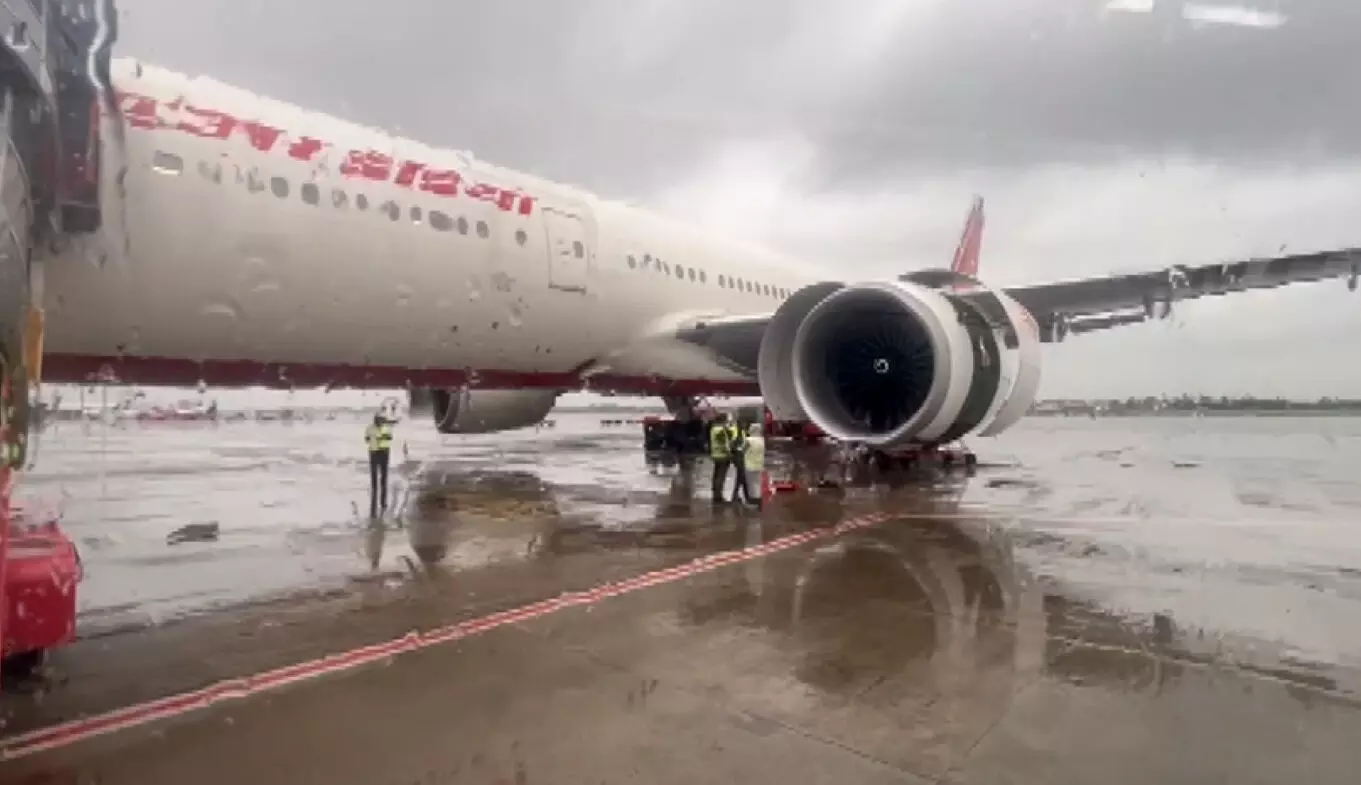
New Delhi, June 17 -- Air India, once the crown jewel of Indian aviation, finds itself in the throes of an unrelenting operational and reputational crisis. The cancellation of six major international flights on Tuesday - connecting India to London, Paris, Vienna, Dubai, and San Francisco - is the latest episode in a saga of compounding troubles. The immediate reasons for these disruptions may range from pre-flight technical anomalies and aircraft unavailability to airspace restrictions due to ongoing geopolitical tensions. But beneath these surface explanations lies a deeper malaise, one rooted in systemic inefficiencies, a reactive safety culture, and inadequate crisis preparedness. These cancellations follow closely on the heels of a catastrophic crash in Ahmedabad on June 12, involving Air India Flight AI-171, which claimed over 270 lives. In the days since, the airline has struggled to maintain basic service continuity, with precautionary inspections of its Boeing 787 Dreamliner fleet triggering more flight disruptions and compounding passenger anxiety.
The chaos is not limited to flight cancellations alone. A recent technical snag forced the termination of a San Francisco-Mumbai flight in Kolkata, where passengers - already fatigued after a transcontinental journey - were made to disembark in the middle of the night and wait for hours with minimal clarity or support. The incident at Netaji Subhash Chandra Bose International Airport is emblematic of a larger dysfunction: one where passenger safety, while ostensibly paramount, is not backed by a robust infrastructure of communication, logistics, or contingency planning. This has placed the airline in a precarious position, where even routine snags spiral into full-blown crises. The situation is exacerbated by the suspension and rebranding of the ill-fated Ahmedabad- London route, now operating under a new flight code but already cancelled again due to aircraft shortage. That aircraft could not be rotated in time for one of the most high-profile international routes - just days after a fatal crash - speaks volumes about how stretched and underprepared Air India's operations remain. Even as Iran's closed airspace and regional tensions offer external complications, the inability to adapt reflects a troubling lack of agility and resilience.
The Tata Group, which took over Air India with ambitions of revival and transformation, now faces its toughest test since the acquisition. While rebranding, cabin upgrades, and loyalty programmes may have boosted optics, they do little to address the airline's foundational challenges. The absence of surplus aircraft, delays in technical rectifications, and opaque communication with passengers all point to a system in need of urgent overhaul. This crisis is not merely about one airline's performance but about India's standing in global aviation. As the national carrier, Air India serves as a gateway for millions - tourists, business travellers, and diaspora alike. Each cancelled flight, each deplaned passenger, and each confused delay chips away at confidence not just in a company but in the larger aviation ecosystem. The Directorate General of Civil Aviation's enhanced oversight and precautionary inspections are necessary, but long-term stability can only come from internal reform. Air India must now invest in maintenance capacity, build a reserve fleet, streamline operations, and rebuild trust through transparency and passenger-first thinking. Anything less, and the cost will be more than cancelled flights - it will be a lost opportunity to reclaim global stature.
What makes this moment particularly consequential is that public sentiment around air travel is shifting in India. With increasing global mobility and rising domestic expectations, travellers are more informed, vocal, and unforgiving than ever before. In the aftermath of the Ahmedabad crash and ongoing disruptions, social media is filled with horror stories - of missed connections, sleepless nights in airports, and a total breakdown of support services. This erosion of public trust does not just affect future ticket sales; it damages the very essence of what Air India must represent: safety, reliability, and national pride. The airline cannot afford to treat these incidents as isolated technical failures. They are symptomatic of a legacy carrier struggling to modernise in a time that demands nothing less than excellence. The path to redemption will require more than damage control - it calls for cultural transformation, operational discipline, and a relentless commitment to putting passengers first.
Published by HT Digital Content Services with permission from Millennium Post.
